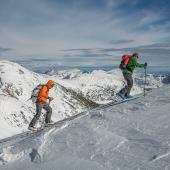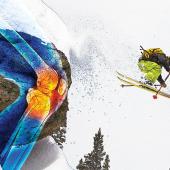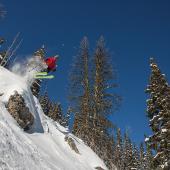Start Now to Protect Your ACL
The increasing incidence of anterior cruciate ligament (ACL) injury has been a growing concern for both the athlete and the medical profession. Approximately 70% of ACL injuries are non-contact, and four risk factors are often associated with the incident. The first may be the environment—surface, footwear, snow conditions, terrain, etc. Second, among women, hormonal influences and the rate of injury are currently being researched; however, there are no findings at this time to justify using hormone intervention. Third is anatomy—basically, your genetic gift! Fourth is biomechanics—the neuromuscular influences in body position and awareness that can lead to or possibly prevent injury. These neuromuscular influences can be modified through different training programs.
Injuries are most likely to occur while running, pivoting, landing a jump, or cutting. Skiing requires many of these movements. During these activities, awareness of proper body position is important to decrease load to the ACL. The position to avoid is 30-degree knee flexion, torsional stress to the knee, and poor hamstring activation.
One risky skiing position is called phantom foot, and familiarizing yourself with this position may be the first step in avoidance. The phantom foot skier is off-balance to the rear with his uphill arm back; his hips are below his knees, his uphill ski is unweighted, and he places weight on the inside edge of the downhill ski tail. To avoid this pattern, keep your weight forward, your feet together, your hands over your skis, and your center of gravity forward.
Exercises that include strengthening your core can assist in keeping your center of gravity in the proper position. One reason women have a higher rate of ACL tears may be the co-contraction reflex of the quadriceps and hamstring failing to coordinate at the correct time to protect the ACL. Exercises that use a closed kinetic chain can help strengthen and coordinate the hamstrings. Another training tool to help decrease injury is balance-proprioception exercises to teach the body proper responses to stress. Plyometrics, done correctly, can decrease chance of injury by learning how to land from a jump without putting the knee in an injury-prone position—that is, not landing straight-legged, foot out, or flat-footed. Fatigue also reduces the ability to reproduce safe joint position. Start training at least 30 days before the season. Three days a week during the season is highly recommended. Sportsmetric training programs include 20 minutes of stretching, 30 minutes of plyometrics, 30 minutes of progressive resistive exercises for the entire body, as well as aerobic exercise. Ask a physical trainer or physical therapist for recommendations.
A multifaceted approach should be applied and customized for the needs of each athlete. The goal should be to provide an interesting and challenging routine that puts the athlete in situations that force a reaction to expected and unexpected changes in the environment. With skiing we all know how important this is. Start now and good luck!








